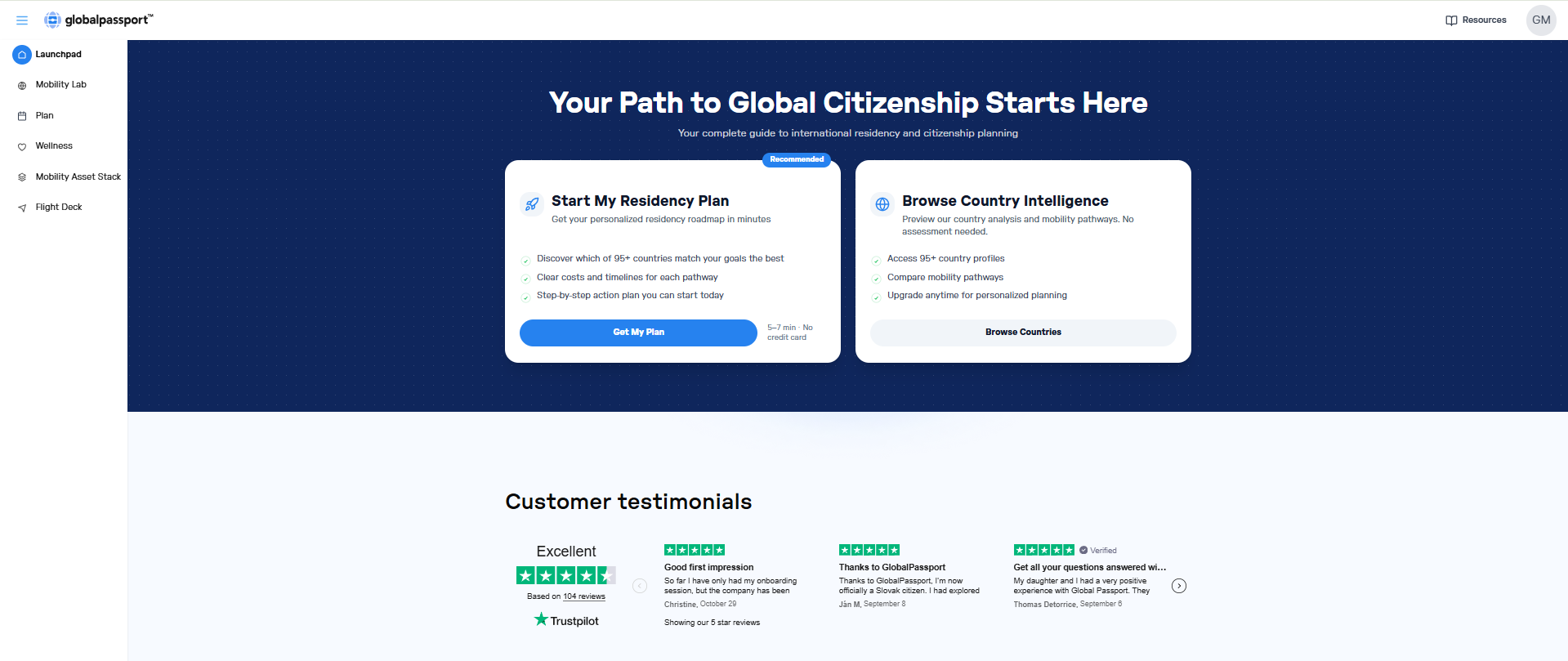Quick Summary
Target Residency Allocation (TRA) is a rule-based model inspired by investment portfolio theory. It sets diversification targets for how many primary and alternate residencies you should hold—1+1, 2+2, or 3+3—based on your risk profile. TRA helps you avoid single-issuer dependency by showing where your mobility portfolio is under-diversified and how to rebalance it.
What Is Target Residency Allocation (TRA)?
TRA is a simple, rules-based framework that adapts portfolio diversification standards from finance to the new asset class of mobility assets. It translates conservative, moderate, and growth risk profiles into specific targets for the number of primary and alternate residencies you should hold, then compares these targets to your current diversification score.
Why it matters:
Dependence on a single government for residence rights, banking, taxation, and movement freedom is a concentrated position—similar to holding one stock. TRA solves this by helping you spread jurisdictional and regulatory risk across multiple residencies.
Why We Built This Model
Financial markets solved concentration risk decades ago through asset allocation and model portfolios.
Global mobility has the same structural problem: most people rely on one jurisdiction, exposing them to policy shocks, banking frictions, and travel restrictions.
TRA applies proven risk-allocation logic to mobility assets by:
- Identifying concentration exposure
- Assigning target diversification levels
- Highlighting governance-spread gaps
- Suggesting high-impact additions to your residency portfolio
.png)
Key Definitions
Mobility assets
Residency permits, e-residencies, digital nomad visas, ancestry routes, retirement visas, startup/skill visas, and investment-based pathways to citizenship.
Primary residency
Your home base—the jurisdiction you rely on for day-to-day living, banking, taxation, and services.
Alternate residency (anchor)
A pre-approved second base you can activate when needed: a new legal back-up for living, banking, safety, and optionality.
Target Residency Allocation (TRA)
The number and type of residencies you should hold depending on your risk profile.
Diversification score
A percentage (0–100%) indicating how your current mobility footprint compares to your TRA target.
How the Model Works (Two Inputs → One Target)
1. Risk Profile (Your Intent + Comfort)
- Conservative: Minimize complexity; secure one alternate.
- Moderate: Balance access with low maintenance.
- Growth: Maximize options across regions, sectors, and trajectories.
2. Current Diversification (Your Reality Today)
- Do you depend on one country?
- Are your residencies clustered in one region/bloc?
- Do you have a mix of program types (work, business, ancestry, retire, investment)?
- Is your banking/tax footprint diversified?
Output:
A target allocation such as 1+1, 2+2, or 3+3, plus guidance on which asset buckets to add.
Heuristic shorthand: 1+1 → 2+2 → 3+3
What Your Diversification Score Means
- 80–100% (Well-diversified): Maintain and rebalance as goals evolve.
- 60–79% (Under-diversified): Add 1–2 alternates or a second primary in a new region.
- <60% (Concentrated): You rely on a single system. Prioritize a fast anchor and a second region.
Score levers include:
- Jurisdictional spread (distinct governance systems and blocs)
- Program type mix (work, business, ancestry, retire, invest)
- Activation time and paths to citizenship
- Banking/tax optionality
- Travel redundancy and visa-free corridors
How to Improve Your TRA Quickly
1. Add a fast anchor in a different legal bloc
E-residency, digital nomad visa, or a low-friction retirement route.
2. Open a second primary residency route
Startup visa, skilled-worker route, or retirement permit depending on life stage.
3. Unlock eligible ancestry
High-quality optionality with long-term upside.
4. Stagger time horizons
Pair one “instant” asset with one “compounding” asset that can lead to citizenship.
5. Diversify regions and governance styles
Avoid over-indexing in one bloc; secure access to a second regulatory ecosystem.
Policy Logic Behind TRA
Concentration risk
One jurisdiction controls your right to stay, work, bank, and travel.
Correlation
Countries within the same bloc often shift policy together (e.g., EU, Mercosur, Schengen).
Liquidity
Some permits activate instantly; others take months or years. Blend fast and slow assets.
Rebalancing
Life events, tax changes, or new immigration rules require periodic adjustment.
Downside protection
Alternates cushion policy shocks, de-risk banking, and ensure mobility continuity.
Example Personas (Applied TRA Models)
Remote Professional — U.S. Base (Moderate 2+2)
U.S. home base + EU digital nomad visa + LatAm remote visa + e-residency.
Retiree Couple — Canada Base (Conservative 1+1)
Canada base + Southern Europe retirement visa for healthcare and seasonal living.
Founder — Asia Base (Growth 3+3)
Asia home base + EU startup visa + LatAm work route + e-residency + ancestry pre-file + Caribbean banking corridor.
What’s the Method Behind the Target Residency Allocation Model?
- Profile intake: Goals, timeline, dependents, income, remote-work modality, documentation.
- Risk alignment: Map to conservative / moderate / growth profile.
- Target setting: Assign 1+1 / 2+2 / 3+3 with recommended asset buckets.
- Gap analysis: Compare current residencies to the target; calculate diversification score.
- Action plan: Prioritized routes, costs, timelines, and documents.
- Rebalance cadence: Annual review or post-policy change.
How Can You Build a Resilient Residency Portfolio with TRA?
Your mobility footprint shouldn’t depend on a single government. TRA gives you a clear, quantitative roadmap for how many residencies you should hold, which regions to diversify into, and what actions move your score upward.
Compare your current footprint to your TRA target inside GlobalPassport, identify your gaps, and start building a resilient, multi-jurisdiction residency portfolio that supports your goals—today and in the future.

Explore Our Tools:
FAQs
Is this legal or tax advice?

No—TRA is a planning framework. Consult qualified legal and tax professionals for jurisdiction-specific guidance.
Does more residencies always mean better diversification?

No. Jurisdiction type, region spread, activation time, and compounding potential matter more than raw count.
Can TRA lead to citizenship?

Some mobility assets ladder into citizenship. TRA highlights which assets are compounding and which are access-only.
What if I only want travel flexibility, not a move?

Choose a Conservative 1+1 and focus on low-maintenance alternates with strong visa-free access.
How is the score calculated?

By weighting your current footprint against your TRA target across jurisdiction spread, program-type mix, activation readiness, and compounding potential.





Conclusion
.webp)
Interested?
Dive into the American Diaspora White Paper downloadable document now.
download WHITE PAPER
Need Help With your Application?
sign up for globalpassport
Design your mobility-asset plan
GlobalPassport Passportfolios curate ready-to-execute sets of programs that fit your goals and risk profile. Start with Graduate Magnets to spot post-study pathways and early-career routes in talent-friendly countries.
Explore Passportfolios


































.svg)
.svg)

